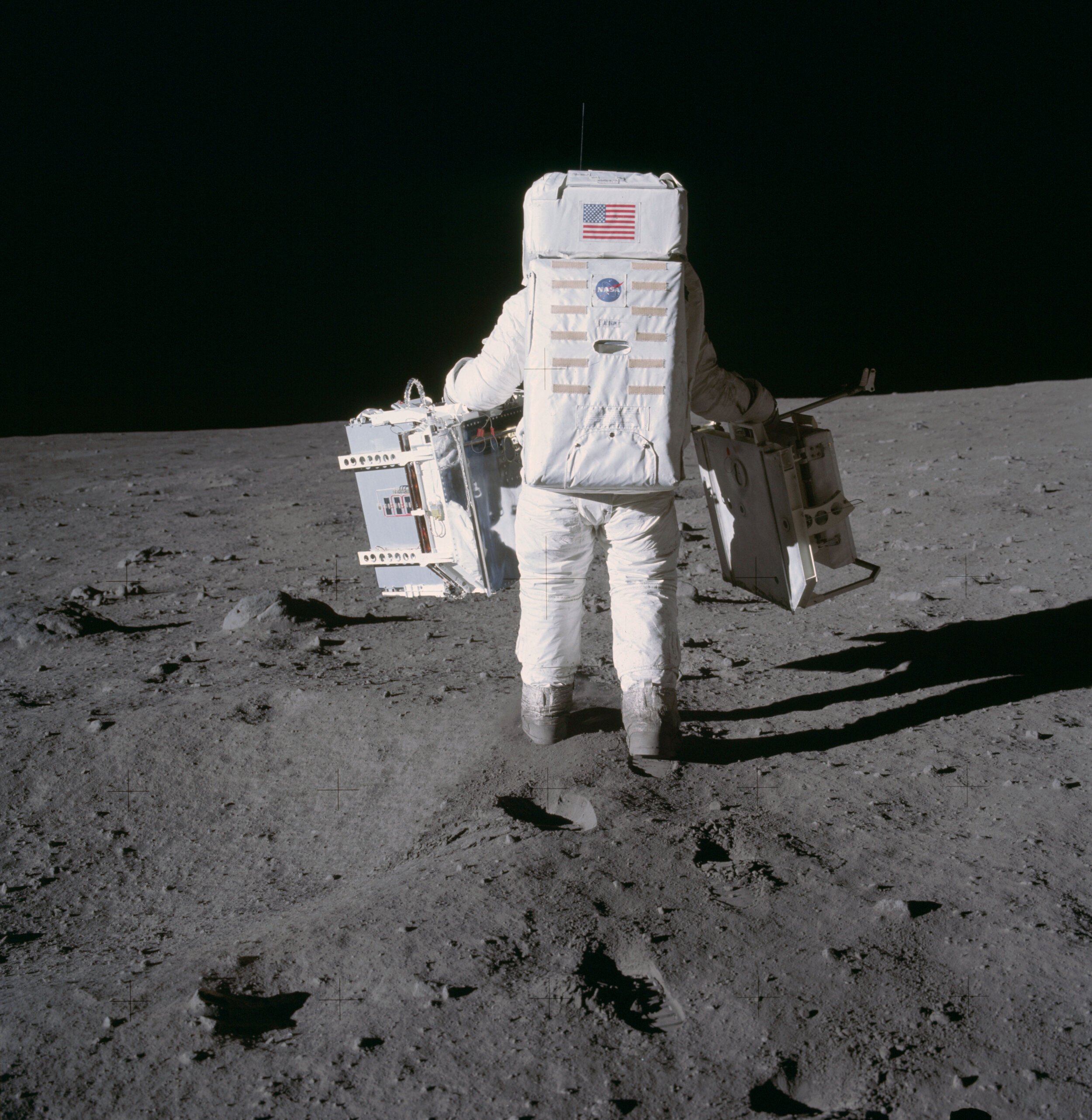The Apollo Program
Buzz Aldrin deploys scientific equipment on the Moon during Apollo 11- image courtesy of NASA
Following the success of Gemini, it was time to set NASA’s sights on the Moon. The Apollo Program included new equipment, new destinations, and new challenges. Over 11 crewed missions, 33 astronauts launched into space and 12 of them walked on the Moon meeting the program’s goals of establishing the US’s leadership in space, developing new technology, and exploring the Moon.
As part of our celebration of Apollo 14’s 50th Anniversary, we’re posting information on Alan Shepard, the Apollo Program, and NASA.
Launches for the Apollo Program used powerful Saturn rockets, in part because there was more equipment to launch. In addition to the command module that now was large enough for three astronauts, the lunar lander also had to be launched. Following the tragic deaths of three astronauts (Grissom, White & Chaffee) during training for Apollo 1 in 1967, NASA reworked safety systems and carried out extra testing before allowing astronauts back into the command module. At the end of 1968, Apollo 7 launched a crewed mission to test the command module and then Apollo 8, 9, and 10 tested both the command module and lunar module over longer missions. Finally on July 20, 1969 Apollo 11 landed the first astronauts on the Moon. Later Apollo missions returned to the Moon five more times (Apollo 13 was supposed to land, but equipment malfunctions prevented that) including Apollo 14.
The Apollo Program was an inspiration to people around the world, illustrating the achievements of people working together toward the huge goal of putting someone on the Moon. Getting to see humans on the Moon, getting to see the Earth from such a distance changed our view of ourselves and our world.

